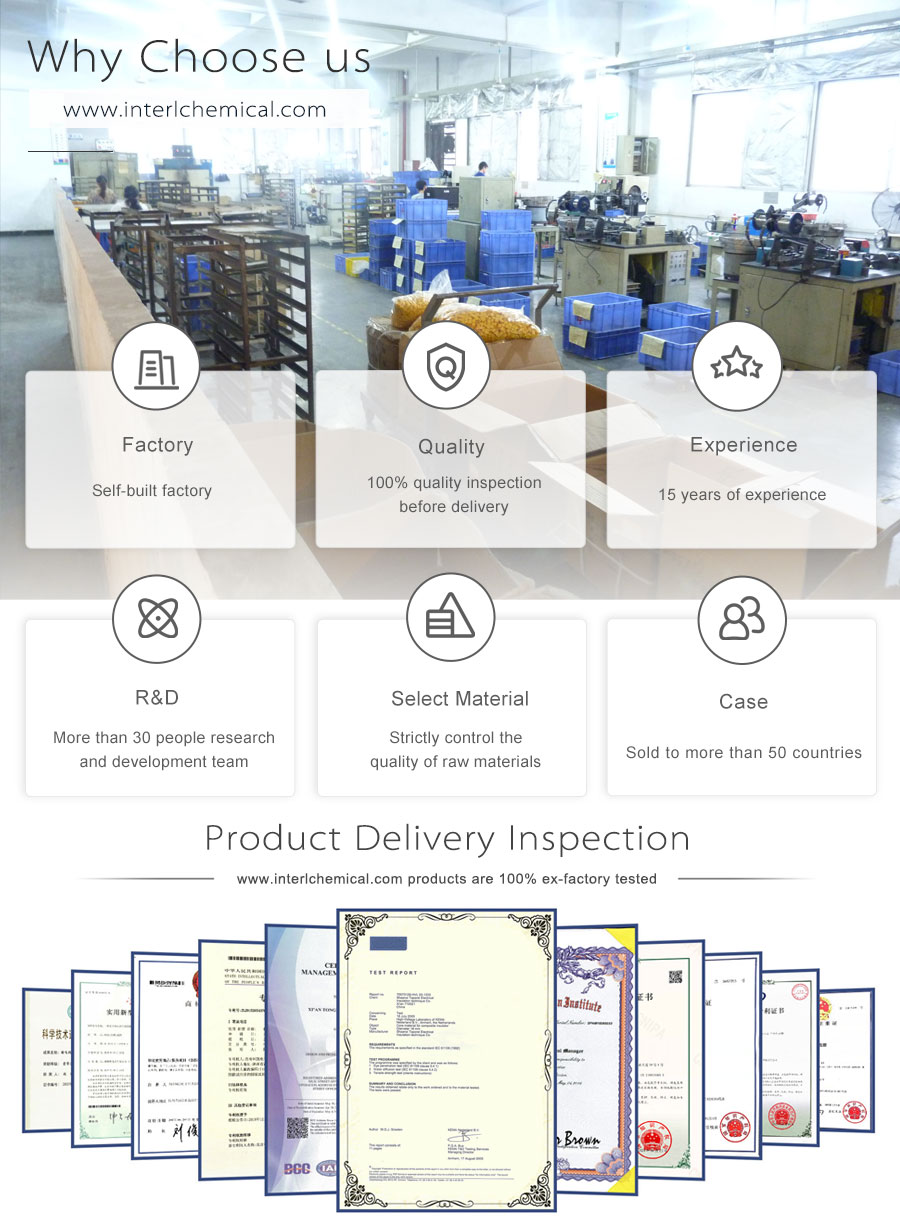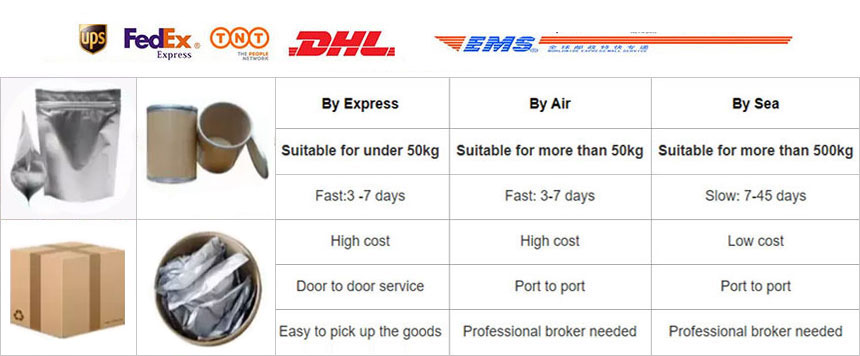Phone: 86-29-89601602
Mail: sales27@interlgroup.com
Add: Room 305 , 3/F , Haipai Decoration Office Building , Yudu Avenue , Yuncheng , Shanxi
Factory Supply 1,4-Phenylenediamine Powder CAS 106-50-3 Raw Materials
Product Overview:
1,4-Phenylenediamine Powder, also known as Urce D, is one of the simplest aromatic diamines and a widely used intermediate for the production of azo dyes, polymers, fur dyes, rubber antioxidants and photographic developers, in addition to being a sensitive reagent for testing iron and copper. 1,4-Phenylenediamine Powder is mainly used in aromatic dyes, azo dyes, sulfide dyes, acid dyes, etc.
Also used as chemical
1,4-Phenylenediamine Powder is mainly used in aromatics, azo dyes, sulfide dyes, acid dyes, etc. It is also used as a raw material for chemical hair dyes, Ursus D series, gasoline inhibitor and developer. As a chemical coloring agent, p-phenylenediamine is currently allowed to be used in the production of hair dyes, but there are clear limits on the amount of use.
The amount of use is limited.
1,4-Phenylenediamine Powder is white to light purple-red crystals. Turns purplish red or dark brown when exposed to air. Soluble in water, ethanol, ether, chloroform and benzene.
Factory Supply 1,4-Phenylenediamine Powder CAS 106-50-3 Raw Materials Attributes
MF: C6H8N2

MW: 108.14
EINECS: 203-404-7
Specification:1,4-Phenylenediamine Powder
Sample:1,4-Phenylenediamine Powder
Brand: 1,4-Phenylenediamine Powder
Appearance: White Powder
Storage: Cool Dry Place
Brand: Globalchemical
Shelf Life: 2 Years
Test Method: HPLC
Factory Supply 1,4-Phenylenediamine Powder CAS 106-50-3 Raw Materials Details
1,4-Phenylenediamine Powder Usage and Synthesis.
1,4-Phenylenediamine CAS 106-50-3, also known as Urce D, is one of the simplest aromatic diamines, pure product is white to light purple-red crystals, exposed to air turns purple-red or dark brown. Slightly soluble in cold water, soluble in ethanol, ether, chloroform and benzene. It can be used to make azo dyes, polymer, also used in the production of fur dye, rubber antioxidant and photo developer, mainly used for aromatic, azo dyes, sulfide dyes, acid dyes, also as fur black D, fur orchid black DB, fur brown N2, and rubber antioxidant DNP, DOP, MB. It is also used as a raw material for cosmetic hair dye Urse D series, gasoline blocker and developer. As a chemical coloring agent, p-phenylenediamine is currently allowed to be used in the production of hair dyes, but there are clear restrictions on the amount used.

White to light purple-red crystals. Turns purplish red or dark brown when exposed to air. Soluble in water, ethanol, ether, chloroform and benzene.
1,4-Phenylenediamine CAS 106-50-3 is an important dye intermediate, mainly used in the manufacture of azo dyes and sulfide dyes, but also used in the production of fur black D and rubber antioxidant DNP, etc.
1,4-Phenylenediamine CAS 106-50-3 is mainly used in the manufacture of azo dyes and sulfur dyes, also used in the production of fur black D, fur blue black DB, fur brown NZ and rubber antioxidants DNP, 288, DOP, DBP. 1,4-Phenylenediamine Raw Materials is also used as 1,4-Phenylenediamine Raw Materials are also used as raw materials for cosmetic hair dye Ulcer D, gasoline inhibitor and developer.
Application/Function of 1,4-Phenylenediamine Powder.
1,4-Phenylenediamine Powder is an important dye intermediate, mainly used in the manufacture of azo dyes and sulfide dyes, but also used in the production of fur black D and rubber antioxidant DNP, etc.
1,4-Phenylenediamine CAS 106-50-3 is used as fluorescent indicator, analytical reagent and fur dyeing agent, also used in the synthesis of dyes
1,4-Phenylenediamine Raw Materials are mainly used in the manufacture of azo dyes and sulfide dyes, also used in the production of fur black D, fur blue black DB, fur brown NZ and rubber antioxidants DNP, 288, DOP, DBP. 1,4-Phenylenediamine Raw Materials are also used as 1,4-Phenylenediamine Raw Materials are also used as raw materials for cosmetic hair dye Urce D, gasoline inhibitor and developer.
1,4-Phenylenediamine Raw Materials is mainly used for fur dyeing, but also can be dyed together with other dyes, often used as a mordant to check ammonia, copper, gold, hydrogen sulfide, iron, magnesium, oxidizer, ozone, sulfur dioxide and vanadium, determination of chromium. Fluorescent indicator for acid-base titration (pH≤3.1 without fluorescence, pH≥4.4 showing orange fluorescence). Reducing agent.
Property and Stability of 1,4-Phenylenediamine Powder.
- 1.1,4-Phenylenediamine Powder is toxic. Its toxicity is basically the same as that of o-phenylenediamine. The oral lethal dose for rabbits is 250mg/kg.
- 2. 1,4-Phenylenediamine Powder can be absorbed through the skin or poisoned by inhalation of dust, and the poisoning phenomenon caused by skin absorption is the most common. Its reaction to the skin varies, with acute severe eruptive eczema reaching the back, face and abdomen, and with scabs similar to those of dandruff. Its dust also varies in its effect on the respiratory tract and can cause symptoms such as rhinitis, bronchitis, frequent fever, characteristic wheezing and tension of the vagus nerve due to inflammation of the trachea. In rabbits, the minimum oral lethal dose is 300 mg/kg, and the maximum permissible concentration of p-phenylenediamine in the workplace is 0.1 mg/m3.

Production method of 1,4-Phenylenediamine Powder.
It is obtained by reducing p-nitroaniline with iron powder in acidic medium. Put the iron powder into hydrochloric acid, heat to 90℃, and add p-nitroaniline with stirring. After addition, react at 95-100℃ for 0.5h, then add concentrated hydrochloric acid dropwise to make the reduction reaction complete. After cooling, neutralize with saturated sodium carbonate solution to pH 7-8, boil and filter while hot, and wash the filter cake with hot water. Combine the filtrate with the washing solution, concentrate under reduced pressure, cool down and crystallize or distill under reduced pressure to obtain p-phenylenediamine in 95% yield.
- 1.1,4-Phenylenediamine Raw Materials is obtained from the reduction of p-nitroaniline in acidic medium with iron powder. Put the iron powder into hydrochloric acid, heat to 90℃, and add p-nitroaniline with stirring. After addition, react at 95-100℃ for 0.5h, then add concentrated hydrochloric acid dropwise to make the reduction reaction complete. After cooling, neutralize with saturated sodium carbonate solution to PH7-8, boil and filter while hot, and wash the filter cake with hot water. Combine the filtrate with the washing solution, concentrate under reduced pressure, cool down and crystallize or distill under reduced pressure to obtain p-phenylenediamine in 95% yield.
- 2. p-Dichlorobenzene ammonolysis Preparation process 1: Add 170g (0.01mol) of copper chloride dihydrate to the autoclave with stirrer, then cool, add 15g of 28% ammonia with stirring, and then add 0.74g (0.005mol) of p-Dichlorobenzene. React at 210℃ for 6h. 50ml of tetrahydrofuran was added to the reaction mixture, the solid was filtered and washed thoroughly with 30ml of tetrahydrofuran, the filtrate and the washings were combined, and the p-phenylenediamine content was 90%. Preparation process 2: Add 92.0 parts of p-dichlorobenzene, 127.7 parts of ammonia, 127.7 parts of water (by mass) and 2.0 parts of copper chloride to the autoclave with stirrer and react at 200°C for 5h. After the reaction, the autoclave is cooled to 90°C and the ammonia is released. The reaction product was added with 105.4 parts of aqueous sodium hydroxide solution to neutralize the free amine. The conversion of p-dichlorobenzene was 99.7% and the selectivity of p-phenylenediamine was 92.4%.










